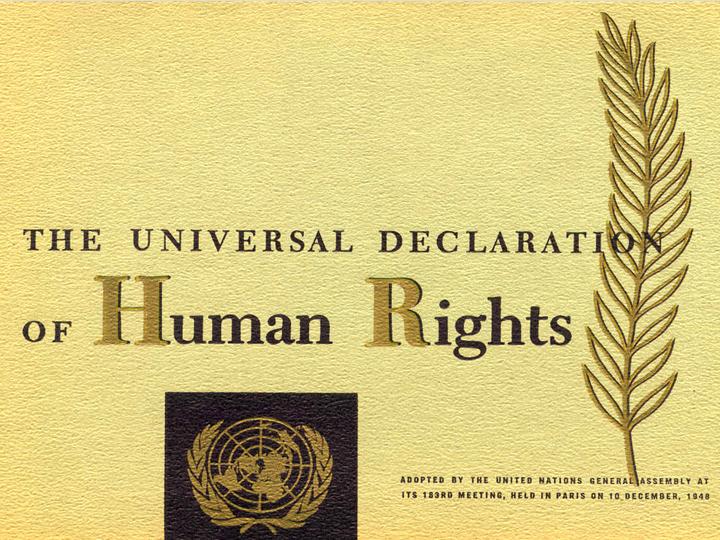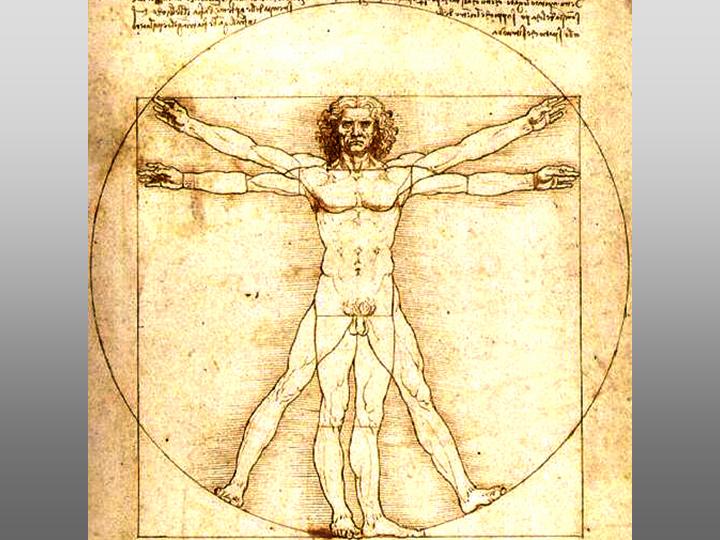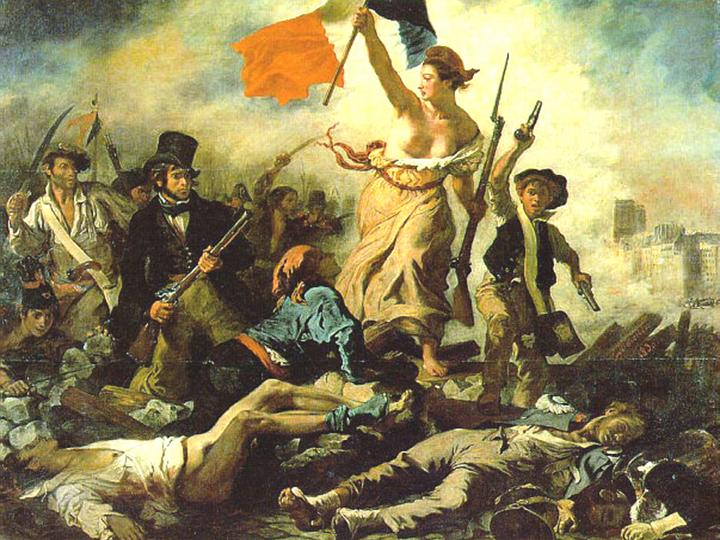 10 Pillars
10 Pillars  Map
Map  Tree
Tree
 Rationale
Rationale
 Forum
Forum
 About
About
 Terms
Terms
 Contact
Contact

Forum
 © © |
 © © |
 © © |
 © © |
 © © |
 © © |
 © © |
 © © |
 © © |
 © © |
| Foundations | Supernatural | Matter & Energy | Space & Earth | N/h Organisms | Body & Mind | Society | Thought & Art | Technology | History |
| Living World | |||||||||
| Knowledge | Supernatural | Universe | Humans | ||||||
Post your comments now!
Generic model for all/most fields
10Pk has 4 main characteristics (hierarchical structure, distinction between categories of the map and fields of knowledge, the metaknowledge- subject-based knowledge structure, the theory-embodiment structure). They enable to form a generic model for structuring specific fields.
Part 1: Metaknowledge (usually this part is called "Theory" although it has other contents)
2. Context (the historical and cultural aspects of the field; exemplary fields: history of..., sociology of...).
3. Methodology (the research and evaluation methodologies of the field).
4. Education (the academic and professional education and training).
Part 2: Subject-based Knowledge (this part is composed of the relevant branches/subfields) (Chaim Zins, March 4, 2013)

Mario Samudio
University of Cundinamarca, Colombia
Chaim Zins: Systems engineering is associated with engineering, which is placed in Pillar 9 (technology), cat 2 (professions) (cat. 65). However, we still need to clarify the conception of systems engineering in order to determine if it is a distinct field of knowledge. This should be done with experts in systems engineering. (March 13, 2013).

List of Participants
Prof. Wareeya Bhavabhutanonda
I
feel so grateful to your kind offer of academic assistance and to
translate the 10 Pillars of Knowledge into the Thai language.
I am
delighted to accept your kindness. It’s a great honor
to me to do so.
As
I mentioned before, 10 Pillars of Knowledge is
very important to human
resource development, especially to a world class leadership
development. I have tried for many years to find
the types of knowledge
that are the most important for building executive
international
leaders. During this time, I was focused on the
philosophical
perspectives. The exploration resulted in a book that
I published in
Thai “Philosophical Thoughts that influence the World
Trending.” Then I
tried to develop a course on an international executive
leadership. I
searched for trends of world leaders, until I found your
research. Your
research totally answers my quest.
In my view, the 10
Pillars of Knowledge map is the most important element in a course
designed for executive leaders in the international community. 10
Pillars of Knowledge is the core of course for leaders in
the new age.
To accomplish the challange of developing such a course your academic
cooperation is invaluable. I am looking forward to hearing
from you on
my idea to translate the 10 Pillars knowledge map into Thai
and develop
the academic course.(February 28, 2009)
Chaim Zins: I will be delighted to work with you on the Thai edition of the map and on academic course.
Prof. Rafael CapurroHochschule der Medien (HdM) - Stuttgart Media University, Stuttgart, Germany
Homepages: http://www.capurro.de; http://icie.zkm.de; http://www.i-r-i-e.net
Prof. Charles H. Davis
School of Library and Information Science, Indiana University at Bloomington
Dr. Henry Gladney
Homepage: http://home.pacbell.net/hgladney
Henry
Gladney: I
did take a quick peek at your Main Classes diagram, and noticed that
the first box within each class was "Theory". Leads to a
suggestion:
consider transmogrifying this classification into a rectangular array
or as close to that as can be achieved without serious
distortion.
I.e., with each row being composed of similarly labeled
boxes. A very
crude first stab at the row labels is:
Row 1: Theory
Row 2: Context
Row 3: Methodology
Row 4: Branches (topics within the
column's topic)
Do
I presume correctly that the structure intended is not a tree (you do
call it a "Knowledge Tree"), but instead a directed acyclic
graph?
I.e., that a lower category can belong to more than one containing
category? If you do not permit this, why not?
One example
suggesting why this is needed is the topic called "philosophy", which
you seem to have spread into at least two columns, whereas universities
typically try to collect it under a single roof.
Of course, you could represent this relationship with links
(cross-references). Perhaps you already are doing so.
I
did not see a natural place for "games" (a favorite Wittgenstein
topic--favorite because it is extremely difficult to define the notion
of a game) or for silly humor. Perhaps the latter belongs
under
"Thought and Art"! (May 2009)
Chaim
Zins: I do like the '4 row' model. In fact, in Pillar 1
you there is a similar structure.
However,
If I will implement the 4 row model on each of the 10 pillars, the
structures of the 10 pillars will turn into typologies (i.e, rational
based structures) rather than taxonomies (i.e., empirical based
structures). Currently, the inner structures of the pillars are based
on empirical studies. (see a short review in the Forum page).
Philosophy
as a general field is placed in Pillar 8 on the REASON category (which
is a subcategory of the THOUGHT category), but various sub fields of
philosophy are placed all over the map. Please note that Philosophy is
not a category of the map. It is a field of knowledge. I consider the
distinction between categories of the map and the fields of knowledge
as the most important theoretical contribution of my study. (May 2009)
Henry
Gladney: In
my book2, I intend to pay careful attention to questions of subjective
distinctions in contrast to objective assertions
(observations).
Thinking about this leads to the following reactions.
(1)
You distinguish "rational-based structures" and "empirical-based
structures". It seems to me that any choice of aspects used
to
categorize topics/objects/actions/... is a subjective decision that one
is free to make any way one pleases. However, if one wants to
communicate with anyone, it is important that the communicants share a
sense of which aspects are "important". If one wants to
communicate
successfully with a large audience, it is helpful to select
categorization aspects that are "conventional".
(2) Your
distinction between "rational-based structures" and "empirical-based
structures" seems to me a weak one. Recall that what
"science" does is
combine observations (empirical) with organizing patterns (a.k.a.
"theories"). Any sorting/categorization of observations
combines
"rational" (thinking and subjective) with "empirical" (what we agree
that we both see/hear/...).
(3) The reason I jumped to
rectangular arrays is that, for mnemonic reasons, I like patterns and
symmetry, even if I push the latter so that it is a bit
strained.
(Notice: "I like" is subjective.)
In a famous essay, Oxford
As I See It, Stephen Leacock (well-known in Canada, but probably not
anywhere else) wrote of Episcopalian ceremony, "... genuflections, if
you like genuflections."
(4) Your entire "Knowledge Tree"
exercise is heavily subjective. E.g., if you want to
categorize
"philosophy" in a certain way, putting it into a certain position in
your structure, you are entirely free to do so. I.e., I can
have no
unimpeachable arguments for supporting a disagreement with your choices.
On
the other hand, if you want people to use what you do, you must make
choices that appeal to their subjective tastes. I.e., you
need to be
in some sense conventional. You have surely seen my favorite
quotation
for this admonition. To remind you, I reproduce it
here. It comes
from Martin Gardner edition of Lewis Carroll: The Annotated Alice:
Alice's Adventures in Wonderland & Through the Looking Glass.
============
`I don't know what you mean by "glory,"' Alice said.
Humpty
Dumpty smiled contemptuously. `Of course you don't—till I tell
you. I
meant "there's a nice knock-down argument for you!"'
`But "glory" doesn't mean "a nice knock-down argument,"' Alice objected.
`When
I use a word,' Humpty Dumpty said in rather a scornful tone, `it means
just what I choose it to mean—neither more nor less.'
`The question is,' said Alice, `whether you can make words mean so many
different things.'
`The question is,' said Humpty Dumpty, `which is to be master—that's
all.'
Lewis Carroll was fully aware of the profundity in Humpty Dumpty's
whimsical discourse on semantics, [which conveys] the point of view
known in the Middle Ages as nominalism; the view that universal terms
do not refer to objective existences but are [merely] verbal
utterances. [This] view was skillfully defended by William of
Occam
and is now held by almost all contemporary logical empiricists.
Even in logic and mathematics, where terms are usually more precise
than in other [disciplines], enormous confusion often results from a
failure to realize that words mean "neither more nor less" than what
they are intended to mean. …
On the other hand,
if we
wish to communicate accurately, we are under a kind of moral
obligation to avoid Humpty's practice of giving private meanings to
commonly used words. (May 2009)
Chaim
Zins:
(1)
You distinguish "rational-based structures" and "empirical-based
structures". It seems to me that any choice of aspects used
to
categorize topics/objects/actions/... is a subjective decision that one
is free to make any way one pleases.
- Agree.
However,
if one wants to communicate with anyone, it is important that the
communicants share a sense of which aspects are "important".
If one
wants to communicate successfully with a large audience, it is helpful
to select categorization aspects that are "conventional".
- What is "conventional"? Conventional in the eyes of whom (the be
holder)?
BTW,
scientific discoveries, and progress seem to go beyond and change the
"conventional". Aren't they? If you disagree, please remember
Copernicus, Galileo Galilee, Kant, and Einstein.
(2)
Your distinction between "rational-based structures" and
"empirical-based structures" seems to me a weak one. Recall
that what
"science" does is combine observations (empirical) with organizing
patterns (a.k.a. "theories"). Any sorting/categorization of
observations combines "rational" (thinking and subjective) with
"empirical" (what we agree that we both see/hear/...).
-
Rational or conceptual based classification starts with
conceptual/phenomenological analysis. Empirical based classification is
based on an analysis of empirical data. For example, a rational based
classification of chairs is based on the concept "chair"; a chair has
shape, material, function, etc. An empirical based classification of
chairs analyze a specific group of chairs (e.g., the 10 chairs in my
apartment) and end up with relevant groups.
(4)
Your entire "Knowledge Tree" exercise is heavily subjective.
E.g., if
you want to categorize "philosophy" in a certain way, putting it into a
certain position in your structure, you are entirely free to do
so.
I.e., I can have no unimpeachable arguments for supporting a
disagreement with your choices.
- First, my knowledge tree is not an exercise. It is based on
a scholarly study as well as on empirical scientific study.
Second,
What is subjective vs. objective? Please explain. A classification - as
well as scientific studies - are product of the subjective minds of the
classifiers and the scientists.
When you claim that "..........." is objective, you do it after
evaluating it by using your subjective mind. Isn't it?
Third,
Philosophy is a field of knowledge. Fields of knowledge are not part of
my map. So we can disagree on the place of a specific field in the map,
but still agree that the map is systematic.
Imagine that
the Map of human knowledge reflects the Library of human knowledge. I
am a carpenter. I designed 10 bookcases. Every bookcase has relevant
shelves; a total of 66 shelves (categories and sub-categories). You can
place the book "Philosophy" on any shelf that you want. In order to
evaluate the design of the 10 bookcases (i.e., 10 pillars of knowledge)
you need to place every book on at least one relevant shelf.
Hope this makes it clearer. (May 2009)
Henry
Gladney: (1)
Implicit in my following comments is some uncertainty about how much
analysis/debate is, in fact, interesting and/or useful.
("Interesting", of course, is purely subjective. "Useful", in
contrast, is a judgment relative to what one is trying to
accomplish--and neither you nor I have made that clear in the
conversation of the moment. (Two of my playmates have "voted"
that the
discussion interests them.))
(2) Re "conventional". (a)
Notice that I put the word in quotation marks, anticipating the kind of
reaction that you express. Having said that, I point out that
my usage
conforms closely to what the Concise OED indicates. I believe
that
"conventional" always implies that the speaker/writer has in mind some
group of listeners/readers. As in (1) and elsewhere, the
notion takes
specific meaning only in the context of what somebody is trying to
accomplish, or what he thinks somebody else is trying to accomplish.
(3)
Re your "starts with": regrettably, I do not find your comment (2) to
be a persuasive clarification. Just when "the start" of a
process is
reckoned is itself a subjective decision about how one wants to look at
the process. In the example of the chairs of your apartment,
before
the part of analysis that you talk about as empirical, you chose which
objects would constitute the set you want to analyze, perhaps leaving
out some chairs and also most tables even though you might occasionally
sit on a table (when your wife wasn't nearby to object). This
choice
already involved a conceptual choice of what it means to be a chair!
A
way of looking at this is that we (subjectively) choose how to
partition a process into portions and aspects of each portion that we
want to discuss and analyze. My argument goes in the
direction that
you cannot do anything "objective" without "subjective" aspects framing
and/or entering the discussion.
(4) You ask "What is
subjective vs. objective? Please explain." Doing so within a
short
e-mail would be difficult, if not impossible. After all, as
analyzes
of Kant's Critique of Pure Reason illustrate, several hundred
philosophical books grapple with this and closely related
distinctions. For instance, I am attaching a short excerpt
from the
index of Michael Polanyi's 1958 book, Personal Knowledge.
Having
issued this caution, I'll attempt a brief explanation of the
distinction that I make: knowledge or information is "objective" if it
is possible for you and me to agree about aspects of a
situation/object/event that we both see/hear/smell/..., doing so in a
way that an impartial third observer would endorse as being in
agreement. In contrast, subjective has to do with opinions or
choices
"of the mind" for which no observer could reliably decide, if they were
announced, whether the speaker truly held the view expressed or was
lying about his views or intentions.
(5) Re your "agree that
the map is systematic"--I have no problem with this. Here,
"systematic" is closely related to "organized". Since it is
clear (to
me, at least) that you are talking about how you organize the
concepts/fields/topics you present, I must necessarily agree that it is
"systematic". (In a contrasting scenario--admittedly a
ridiculous
one--in which you might have written the names of your topics onto
dice, thrown the dice onto a table, and set up your map according to
the distances between dice, we would say the arrangement was "random"
instead of "systematic".)
(6) Re your "my knowledge tree is
not an exercise. It is based on a scholarly study as well as on
empirical scientific study". My use of the word "exercise"
seems to
have rubbed an open wound. It was not intended as an
evaluation or in
any way pejoratively. Instead, it conforms to one of the
definitions
in the Concise OED, viz., "an activity carried out for a specific
purpose". I.e., the OED definition makes no distinction
between a
student's homework exercise and the kind of exercise that I engaged in
to write "Preserving Digital Information". In particular,
evaluation
of whether the action is "scholarly" or "scientific" is irrelevant to
what "exercise" is meant to convey in conventional English. (May 2009)
Chaim Zins: I invite our colleagues to comment. Thanks (May 2009)
Dr. Luis GutierrezThe Pelican Web
The January 2007 "website of the month" is Map of Human Knowledge by Dr. Chaim Zins, Knowledge Mapping Research, Israel. This website provides excellent guidance for the design of Knowledge Organization Systems (KOS). I am grateful to Dr. Zins for bringing his work to my attention. The subject matter of the website is knowledge organization, and researching this website has been instrumental in formulating our own knowledge organization model for this research project, as reported in section 7 of this issue.
Zins' model focuses on organizing knowledge to support research. In a web-based KOS, the bibliographic elements to be organized are URL links. This requires that links to websites with related content be located in close proximity is the links directory. While reviewing information in a given website, the researcher is thereby reminded of other websites that provide "knowledge context." The value of context is augmented by adding hyperlinks to all the websites, so that the reader is invited to navigate back and forth between the websites in a given knowledge neighborhood after the researcher is in the neighborhood. The value of a KOS is in guiding the researcher to the right neighborhood.Adding hyperlinks is mechanical. The real challenge is to design a taxonomy of knowledge neighborhoods that separates unrelated knowledge domains and nests together knowledge that is closely related. This is easier said than done, and there is no such thing as taxonomy of knowledge that is adequate for the needs of all researchers all the time. The knowledge architecture proposed by Zins is among the best I have seen. His Portal to Human Knowledge is structured around ten pillars of knowledge pertaining to four phenomena amenable to exploration and gathering of human knowledge. The scope of knowledge under each of the ten pillars is explained here.
This map of knowledge is a breakthrough in knowledge organization. The correspondence between phenomena that can be known and the ten pillars is impeccable. The color codes are helpful, and the pillar definitions on the right hand column are simple, precise, and accurate. The images, on the other hand, are expendable (in my opinion). Granted that "a picture is worth a thousand words," no picture can capture all the angles of knowledge contained in any given pillar (or subdivision thereof), and for some they may be an unnecessary distraction. For instance, the image for pillar [1] represents the Inquisition tribunal challenging Galileo's contribution to knowledge, a contribution that certainly went against "the philosophical, historical, sociological, methodological, and the mediating perspectives of human knowledge" of his time. When you click on the image, a bigger image is shown without further explanation. The value of the images might be enhanced if the enlarged images were to provide a concise explanation of how the art represents the textual definition, albeit without exhausting the possibilities. ... For the full article see the January 2007 Website of the Month.
Prof. Glynn Harmon
Graduate School of Library and Information Science, The University of Texas at Austin
The main thing I can suggest at this point is that organization of knowledge remains very much caught up in controversy about whether knowledge has a fixed character of its own, which remains to be realized or discovered by human or other agent minds (Platonic view) or whether knowledge organization is something very much in the eye of the beholder, or something set up to serve a purpose for a time (empiricist or realist view?).
Anyhow, full speed ahead!
Chaim Zins: These issues will be discussed in the forum.
David.C.Isaak
My question is how do you reconcile the second condition with the fact that new categories of knowledge may emerge over time? Would not an extensive knowledge map be more ideal? (January 1, 2012)
Chaim Zins: Human knowledge is constantly growing. Therefore, the structure of 10PK may be changed over time.
In every level of the hierarchical structure all the categories should meet the three conditions. A classification system is evaluated by the three, or rather four conditions: exclusivity, exhaustiveness, adequacy, and redundancy (not being redundent).
Please note that the book was published. It was first presented on October 23, 2011 at the XII ENANCIB annual conference, the National Museum of Brazil, Brasilia.
Mr. Arthur Murphy
Web Services Leader, General Libraries, Emory University
Even Google has tried a classification (http://www.google.com/dirhp). Quite different, of course. And, not at all like yours. I would be interested to see how much consensus there is in developing a universal hierarchy. A noble goal.
Like Prof. Glynn Harmon, I wish you full speed ahead."
Ms. Grazyna Nawrocka
I do suspect that in different countries hierarchy of sciences vary. I would expect that India might organize their knowledge/sciences quite differently, and religions other than Roman Catholic might interpret/percive "supernatural" as closer to reality that our Polish culture does. (May 2009)
Chaim Zins: Ms. Grazyna Nawrocka translated the 10 Pillars map into Polish. See More comments on the Polish version...
Your system will be scrutinized from the point of view of putting "apples with apples and oranges with oranges." There are some sciences missing from your map, and small entities are placed on top of classification, like therapies, while a big ones are not mentioned, or placed in wrong place. (June 2009)
Chaim
Zins:
10 Pillars differs from other maps by several essential elements, among
them the distinction between categories of the map
and fields of
knowledge. Medicine is a field of knowledge. It is not a category of
the map. "Health and wellbeing" is the relevant category for placing
Medicine. One can disagree on the place of medicine in the map, but
this does not mean that the map is not consistent.
In the
version that you translated I decided to map (i.e., place) only
independent fields. Therefore you can find Chinese Medicine (which is
an independent field) and you do not find Internal Medicine (which is
broader than Chinese Medicine), since Internal Medicine is a sub-field
of Medicine. I hope to resolve these issues in the next version of the
map that will include 600-700 fields.
Links: 1, 2, 3
I wish you well with your project, and would like to offer a suggestion. To what end do you wish your project to achieve, for if you want it to be a computational benefit to the world, and use data mining and analytics to map knowledge with metrics together to model and help solve some of the worlds problems, I would like to suggest that you incorporate some thing like DDC notation, because using a 10 base digit system, works best with the modelling systems available at this time. (February 2, 2009)
My vision for the last 10 plus years, is to educate people in the idea that all human knowledge is already represented in a library classification system, and by using a library classification framework, as a knowledge framework, and using metrics as a distance measure, it becomes possible to map human decision making, and this can then be replicated in a more simple way by artificial intelligence and computation applications. One way I explain it is to imagine a library, then think of a recent decision you have made, then we are going to link all the different relevant knowledge areas with pieces of string, and the colour and length of the string is proportional to that pieces of knowledge on the decision making process. Then you can stand back, or use a different person’s decision on the same topic, and look at the differences.
This type of methodology could then be applied with data mining and analytics, on a decision making dataset, and you could then start to model knowledge usage, by people, etc.
Hence, why I said earlier that if your knowledge pilar project can use a decimal notation system like DDC, then you can lend your knowledge framework to other uses. (February 4, 2009)
Mr. Kyoko OkiI am writing in response to your call for support regarding the translation of the Map of Human Knowledge and its rationale... I am a native Japanese speaker, and it would be honourable for me to translate this great work into Japanese. To briefly introduce myself, my name is Kyoko Oki. I am interested in analysing knowledge as an asset for socio-economic development, and came across your homepage (http://www.success.co.il/index.html) when trying to understand how human knowledge is organised... (May 2009)
Chaim Zins: I will be Honored.
I am personally interested in how this map might evolve in future when more and more interdisciplinary (or transdisciplinary or crossdisciplinary) work is done. I could imagine such work makes the pillar taller (as a result of the emergence of a new field) and shorter (as a result of the existing field merged into another existing one), but what if such work had, for example, two main focuses (say, the natural environment and social development) and produced knowledge which is distributed almost equally between Pillar 4 (SPACE & EARTH) and Pillar7 (SOCIETY)? Would the two pillars be linked to each other in the map? Or, could it happen that a field of knowledge migrates from one pillar to the other as a result of such interdisciplinary work? These questions are very hypothetical, but I am very much curious about this map’s future form. (June, 2009).
Chaim Zins: Ms. Kyoko Oki translated the 10 Pillars map into Japanese. See More comments on the Japanese version...
Dr. John F. SowaI'd
also like to make a few suggestions.
As you know, I have emphasized the theoretical and logical aspects of
ontologies, since those are necessary for the computer
applications.
But
I
also believe that it's important to relate the computer-oriented
ontologies to the more traditional resources designed for people.
As
I've said many times on ontolog forum, I believe that all the
computer-oriented notations should also have a humanly readable form
based on controlled natural languages. For example, see the
following
slides: Common Logic Controlled English.
As
those slides illustrate, it's possible to have a humanly readable
controlled natural language, which can be automatically translated to
and from the computer-oriented notations.
I also believe
that graphics are important and various kinds of graphical notations,
pictures, and photographs should also be used in conjunction with the
formal notations. Following are the slides for another talk
about the
use of graphical notations as an aid to mapping informal language to
the various formalisms: Concept
Mapping.
Another
point I've made on ontolog forum is the importance of the various
terminologies that have been developed for all the specialized fields
of human knowledge and activities. They give labels to all
the
concepts that must be formalized in any kind of computerized resources.
I
believe that the kind of work you have been doing would be important to
organize and classify the kinds of ontologies that are being discussed
on ontolog forum. It would also provide the essential links
to the all
the traditional resources. The fact that you've been
addressing
multiple languages other than English is also important, and we should
include such links in whatever ontology resources we develop (June
2009).
Department o Library Science, Chiangmai University, Chiangmai, Thailand
a must for your library
Chaim Zins, Knowledge Mapping Research, 26 Hahaganah St. Jerusalem, 97852 tel: 972-2-5816705 chaim.zins@gmail.com